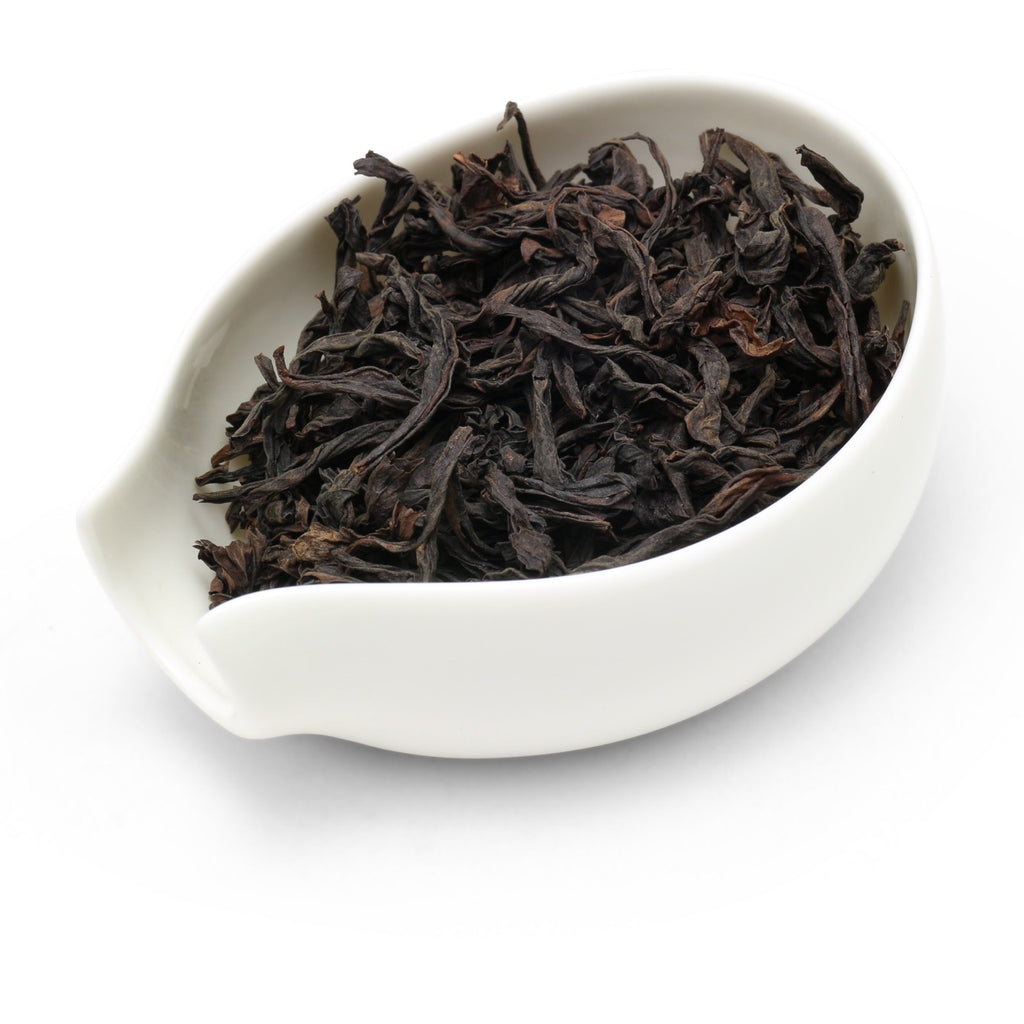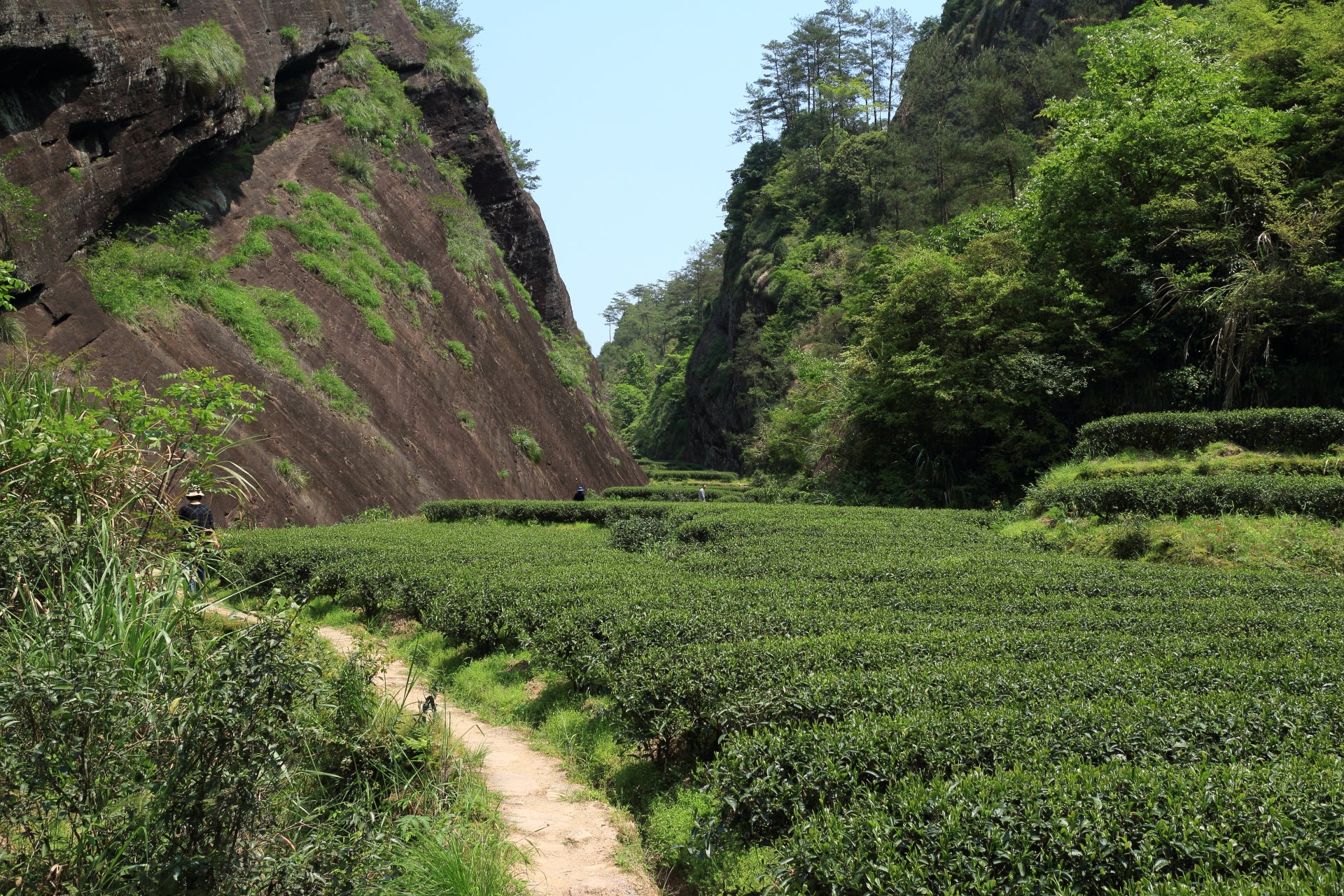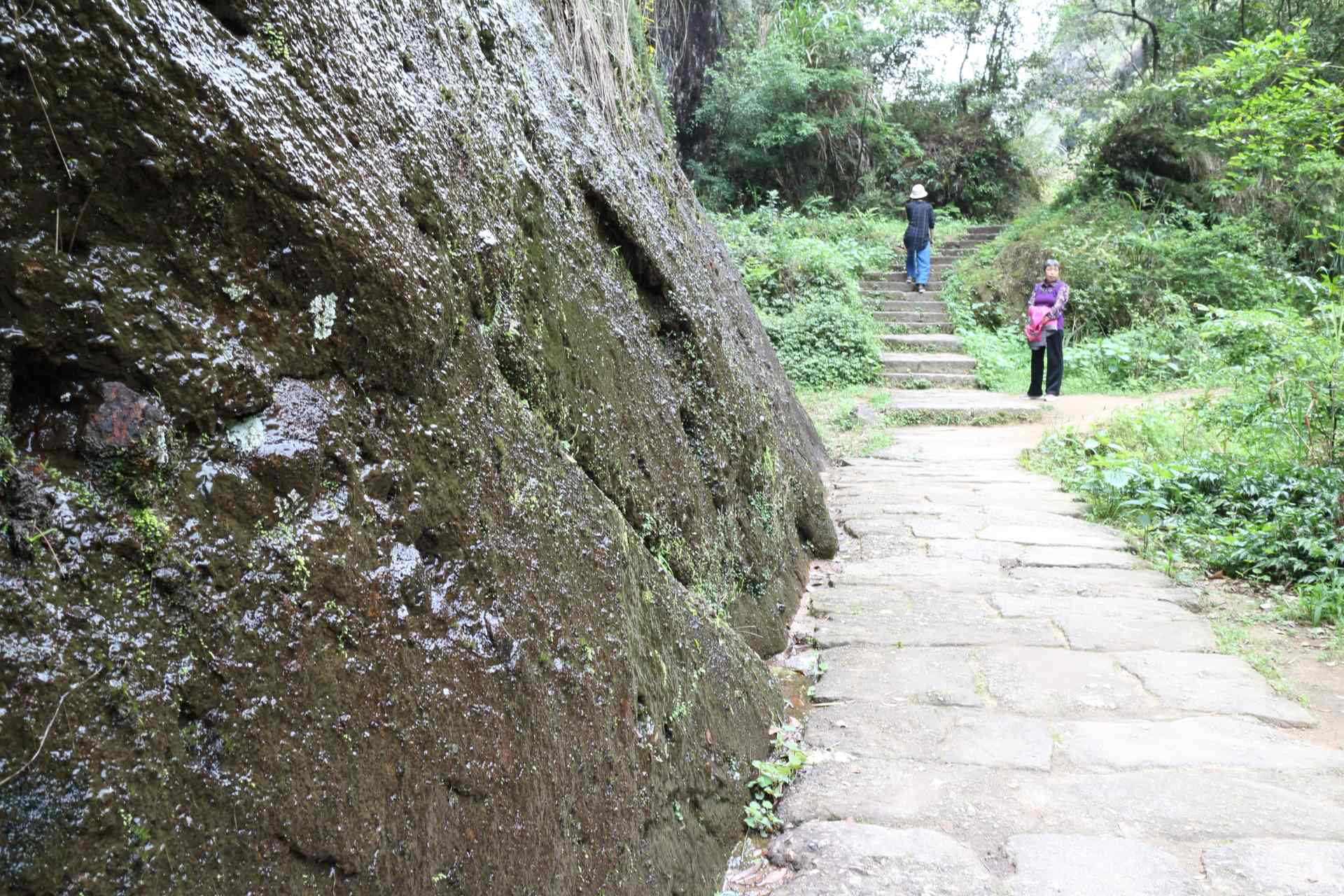Matouyan Rougui
Dieser Tee aus Matouyan, einer der berühmtesten Klippen in der Region Wuyi und inbesondere bekannt für den Anbau von Rougui (oft bezeichnet als Ma Rou), ist anders als seine Artgenossen. Während Rougui üblicherweise geschmacksintensiv und vollmundig ist, erinnert dieser Tee eher an Adjektive, die ihn zu neuen Höhen erheben: zart, harmonisch oder sogar das chinesische Wort nei lian, welches einen künstlerischen Stil geprägt von Zurückhaltung, Subtilität und Nachdenklichkeit bezeichnet.
Ein angenehm hölzernes Fundament liefert das Parkett, auf dem Noten von Zitrus und Blumen im Tanze verflochten sind, wobei jeder Schritt ihrer Choreographie mit einer sanften Würzigkeit nachhallt, die leise an seine Herkunft erinnert. Bevor dieses Rendevouz sein Ende findet und der Tee sich auf die Reise Richtung Rachen begibt, hinterlässt er der Zunge ein Abschiedsgeschenk von Mineralität kombiniert mit einem kühlenden Gefühl von Pfefferminze.
Wie bei einem Tanz belohnt dieser Rougui eine aufmerksame Herangehensweise und Sorgfalt bei jedem Schritt. Ein erstklassiger Begleiter für die feineren Momente im Leben.
Geschrieben von Sigi
- HERKUNFT: Matouyan, Wuyishan, Nanping, Fujian, China
- WAS DER NAME BEDEUTET: Kassia aus Matouyan (ma tou yan rou gui)
- ZÜCHTUNG: Rou Gui
- GEERNTET AM: Frühling 2024
- GESCHMACK: Sandelholz, Zitronenzeste, Pfefferminze
- Menge: 6g / 500ml
- Wassertemperatur: 90°C
- Ziehzeit: 5 min
- Menge: 3g / 100ml
- Wassertemperatur: 90°C
- 4 Aufgüsse: 45, 60, 60, 90 sec
Die besten Ergebnisse beim Gongfu Cha erzielen Sie, wenn Sie den Tee im traditionellen Gaiwan oder in einer Yixing-Teekanne zubereiten. Eine zu hohe Wassertemperatur könnte die Blätter verbrennen und zu einem bitteren Geschmack führen.
Additional Information
Authentic Wuyi Yan Cha is produced in the Wuyi Mount region, a UNESCO natural heritage site. The dramatic gorges of the Nine Bend River are surrounded by a largely intact subtropical forest and smooth cliffs of black-brownish rocks. The tea plants grow in narrow valleys, next to the cliffs, in a mineral-rich soil.
Today Wuyi Yan Cha is one of the most valued teas in China. Because it has become a status symbol, many wealthy Chinese are willing to pay a fortune for it without even knowing how a proper Wuyi Yan Cha should taste. The result has been prices inflating to unjustified level and quality often sacrificed for quantity.
Unique to the Wuyi Yan Cha is a mineral savor coming from the soil and the surrounding cliffs. Being the oolong with the highest fire finish, fresh Yan Cha may as a result be strong and pungent. Sharpness and too-prominent astringency subside upon ageing. Premium high-fire Yan Cha tastes better after a few years of storage. Use a Yixing teapot to soften the tea, should it be too astringent for your palate.
The overall tasting profile is rich, complex, and deep. Depending on cultivar and environment, the mineral-roasted flavor is refined by floral, fruity, nutty or woody accents.










